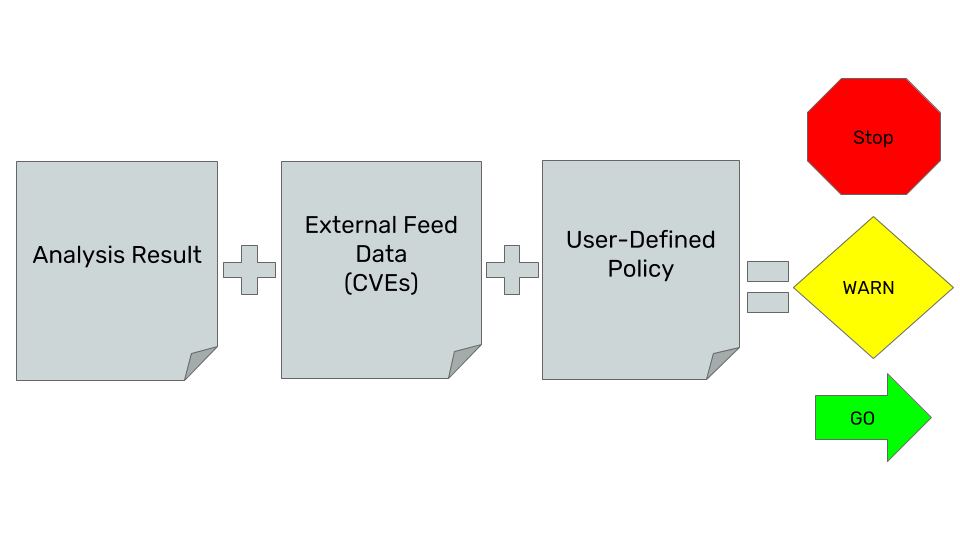Concepts
How does Anchore Enterprise work?
Anchore takes a data-driven approach to analysis and policy enforcement. The system has the following discrete phases for each image analyzed:
- Fetch the image content and extract it, but never execute it.
- Analyze the image by running a set of Anchore analyzers over the image content to extract and classify as much metadata as possible.
- Save the resulting analysis in the database for future use and audit.
- Evaluate policies against the analysis result, including vulnerability matches on the artifacts discovered in the image.
- Update to the latest external data used for policy evaluation and vulnerability matches (feed sync), and automatically update image analysis results against any new data found upstream.
- Notify users of changes to policy evaluations and vulnerability matches.
Repeat step 5 and 6 on intervals to ensure you have the latest external data and updated image evaluations.

The primary interface is a RESTful API that provides mechanisms to request analysis, policy evaluation, and monitoring of images in registries as well as query for image contents and analysis results. Anchore Enterprise also provides a command-line interface (CLI), and its own container.
The following modes provide different ways to use Anchore within the API:
- Interactive Mode - Use the APIs to explicitly request an image analysis, or get a policy evaluation and content reports. The system only performs operations when specifically requested by a user.
- Watch Mode - Use the APIs to configure Anchore Enterprise to poll specific registries and repositories/tags to watch for new images, and then automatically pull and evaluate them. The API sends notifications when a state changes for a tag’s vulnerability or policy evaluation.
Anchore can be easily integrated into most environments and processes using these two modes of operation.
Next Steps
Now let’s get familiar with Images in Anchore.
Last modified March 24, 2022